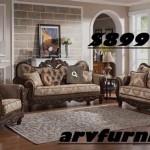Self-Adhesive Vinyl Sheets: A Versatile Solution for Furniture Transformation
Self-adhesive vinyl sheets, also known as contact paper or vinyl wraps, have emerged as a popular and cost-effective method for updating and protecting furniture. These sheets offer a wide array of colors, patterns, and textures, providing a practical alternative to traditional refinishing techniques like painting or staining. Their ease of application and durability make them a suitable choice for both DIY enthusiasts and professional interior designers seeking to revitalize furniture without extensive labor or investment.
The composition of self-adhesive vinyl sheets typically involves a thin layer of vinyl printed with the desired design, backed by a strong adhesive layer protected by a release liner. The vinyl itself can vary in thickness and material, influencing its durability, flexibility, and overall appearance. The adhesive quality is another critical factor, determining the sheet's ability to adhere securely to the furniture surface and resist peeling or bubbling over time. Understanding the nuances of these components is essential for selecting the optimal vinyl sheet for a specific furniture project.
Understanding the Benefits of Self-Adhesive Vinyl Sheets
The popularity of self-adhesive vinyl sheets stems from a multitude of advantages they offer compared to traditional furniture refurbishment methods. These benefits encompass cost-effectiveness, ease of use, versatility, and protective qualities.
Firstly, self-adhesive vinyl sheets are significantly more budget-friendly than options like professional furniture refinishing or purchasing new furniture. The material cost is relatively low, and the DIY application minimizes labor expenses. This affordability makes it an accessible option for individuals seeking to refresh their home decor without breaking the bank.
Secondly, the application process is considerably simpler than painting or staining. It requires minimal tools, primarily a measuring tape, a cutting tool (such as a utility knife or scissors), a smoothing tool (like a squeegee or credit card), and a clean cloth. The self-adhesive backing eliminates the need for messy glues or adhesives, streamlining the process and reducing the potential for errors. Detailed instructions are often provided by manufacturers, making the application straightforward even for beginners.
Thirdly, self-adhesive vinyl sheets offer unparalleled versatility in terms of design options. They are available in a vast range of colors, patterns, textures, and finishes, including wood grain, marble, metallic, and solid colors. This extensive selection allows for customization to match any existing decor or achieve a desired aesthetic. Furthermore, some companies offer custom printing services, enabling homeowners to personalize their furniture with unique designs or photographs.
Finally, these sheets provide a protective layer for furniture surfaces. They can shield against scratches, stains, and minor damage, extending the lifespan of the furniture. This protective quality is particularly beneficial for high-traffic areas or furniture subjected to frequent use. The vinyl surface is also typically easy to clean, requiring only a damp cloth to remove spills or dirt.
Choosing the Right Type of Self-Adhesive Vinyl Sheet
Selecting the appropriate self-adhesive vinyl sheet is crucial for achieving a successful and long-lasting result. Several factors should be considered, including the type of furniture, the intended use, and the desired aesthetic. Understanding the different types of vinyl and their specific properties can help ensure the chosen sheet meets the project's requirements.
The thickness of the vinyl is a primary consideration. Thicker vinyl sheets are generally more durable and resistant to tearing or scratching. They are suitable for furniture that experiences heavy use or is prone to damage. Thinner vinyl sheets are more flexible and easier to apply around curves and edges, making them ideal for intricate designs or furniture with complex shapes.
The adhesive quality is another critical factor. High-quality adhesives provide a strong bond to the furniture surface, preventing peeling or bubbling over time. Some adhesives are specifically designed for certain materials, such as wood, metal, or plastic. It is essential to select an adhesive that is compatible with the furniture's surface to ensure optimal adhesion. Removable adhesives are also available, allowing for easy removal without damaging the underlying surface. These are useful for temporary applications or for those who anticipate changing the design in the future.
The finish of the vinyl sheet also plays a significant role in the overall appearance of the furniture. Glossy finishes provide a smooth, reflective surface, while matte finishes offer a more subdued and natural look. Textured finishes, such as wood grain or embossed patterns, add depth and visual interest. The choice of finish depends on the desired aesthetic and the surrounding decor.
The print quality and colorfastness of the vinyl sheet are also important factors to consider. High-quality printing ensures that the design is sharp and vibrant. Colorfastness refers to the vinyl's ability to resist fading or discoloration over time, especially when exposed to sunlight or cleaning agents. Selecting a vinyl sheet with good colorfastness ensures that the design remains vibrant and attractive for years to come.
Application Techniques for Self-Adhesive Vinyl Sheets
Proper application is essential for achieving a professional-looking finish and maximizing the lifespan of the self-adhesive vinyl sheet. While the process is relatively straightforward, careful attention to detail is necessary to avoid bubbles, wrinkles, or misalignment.
The first step is to thoroughly clean and prepare the furniture surface. This involves removing any dirt, dust, grease, or loose paint. A degreaser may be necessary for surfaces that are particularly greasy or oily. The surface should be completely dry before applying the vinyl sheet. Smooth surfaces are ideal, but if the furniture has imperfections, they should be filled with wood filler or sanded down to create a more even surface.
Next, measure the area to be covered and cut the vinyl sheet to the appropriate size, leaving a small overlap around the edges. This overlap allows for minor adjustments during application and ensures that the entire surface is covered. It is advisable to cut the vinyl sheet on a flat, stable surface using a sharp cutting tool and a ruler or straight edge for precise cuts.
Peel back a small portion of the release liner from the vinyl sheet, exposing the adhesive. Carefully align the exposed adhesive with the edge of the furniture surface. Use a squeegee or credit card to smooth the vinyl sheet onto the surface, working from the center outwards. Apply even pressure to remove any air bubbles or wrinkles. Peel back the release liner gradually as you continue to smooth the vinyl sheet onto the surface.
For curved surfaces or edges, it may be necessary to use a heat gun or hairdryer to soften the vinyl sheet. This will make it more pliable and easier to conform to the shape of the furniture. Apply heat gently and evenly, being careful not to overheat the vinyl sheet, which could cause it to melt or warp. Use the squeegee or credit card to smooth the vinyl sheet around the curves and edges, ensuring a tight and seamless fit.
Once the vinyl sheet is fully applied, trim the excess material around the edges using a sharp utility knife. Be careful not to cut into the furniture surface. Use a straight edge as a guide for precise cuts. After trimming, smooth the edges with a damp cloth to ensure they are securely bonded to the furniture surface.
Finally, inspect the finished surface for any remaining air bubbles or wrinkles. If any are present, use a pin or needle to puncture the bubble and then smooth the vinyl sheet with a squeegee or credit card. Allow the adhesive to fully cure for the recommended time, as specified by the manufacturer, before using the furniture.
Following these application techniques will help ensure a professional-looking and long-lasting finish, transforming furniture with self-adhesive vinyl sheets. Careful preparation, precise cutting, and meticulous application are key to achieving optimal results.

Adhesive Paper For Wood Furniture 40 1000cm Dark Brown Vinyl Self Stickers In The Kitchen Bedroom Living Room Counter Table Walmart Com

D C Fix Decorative Vinyl Film For Furniture Walls And Cabinets Matte White Adhesive 26 57 In W X 78 74 Fa346 8006

Black Slate Matt D C Fix Self Adhesive Vinyl Kitchen Furniture Wrap Film Etsy

Wood Texture Furniture Veneer Self Adhesive Waterproof Sticker Foil Decals Etsy

Dark Panel Furniture Veneer Self Adhesive Waterproof Sticker Foil Decals Etsy

Voleaar Light Blue Contact Paper 15 7x196 Inches Self Adhesive Vinyl For Cabinets Walls Walmart Com

Self Adhesive Marble Vinyl Waterproof Film Wallpaper Kitchen Cabinet Furniture

D C Fix Walls And Cabinets Matte White Adhesive Film 26 57 In W X 78 74

Light Cream Glossy Dc Fix Self Adhesive Vinyl Kitchen Furniture Wrap Film Etsy

D C Fix Walls And Cabinets Matte White Adhesive Film 26 57 In W X 78 74


